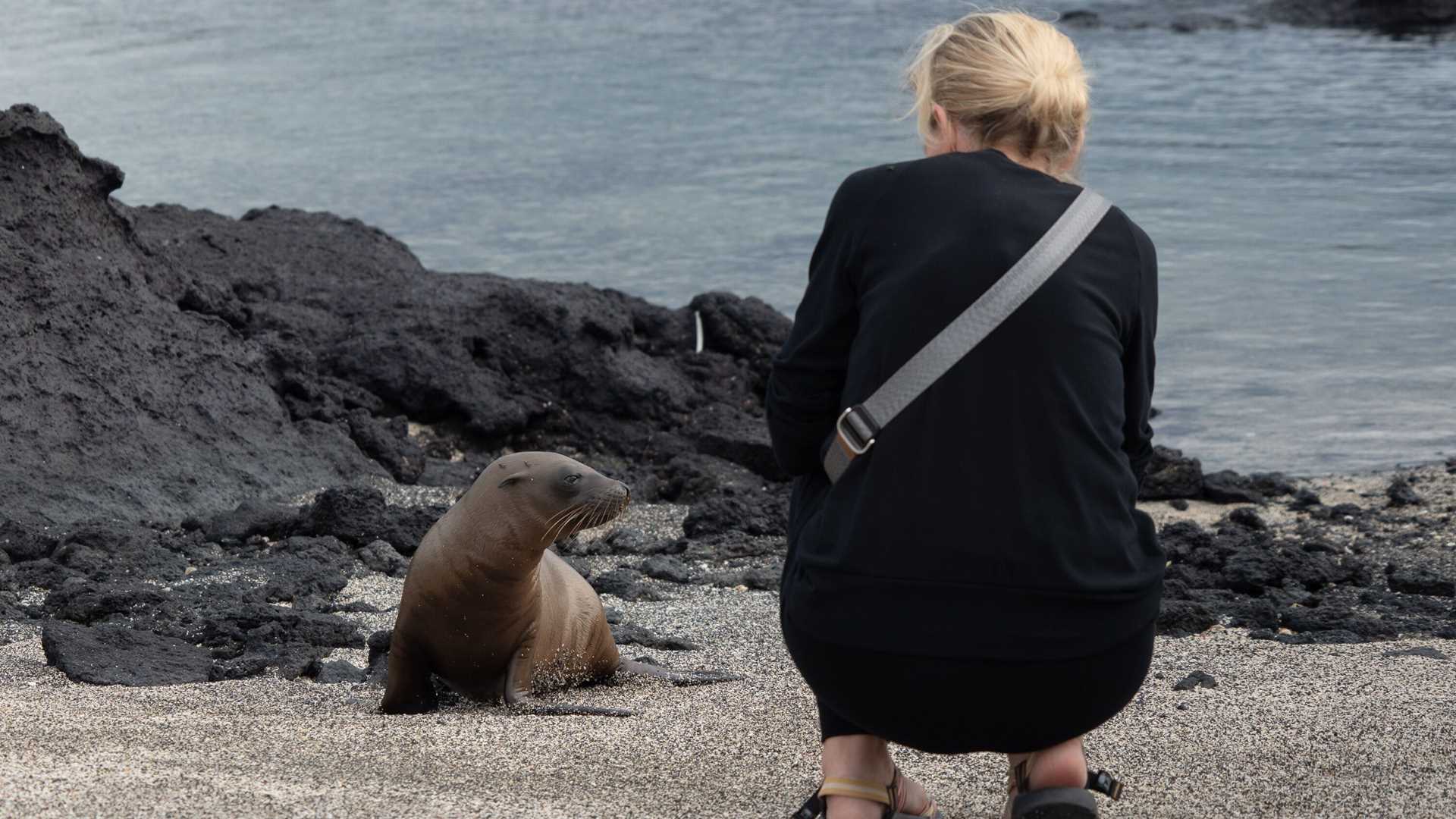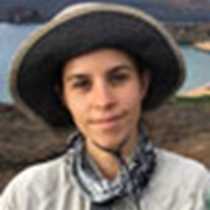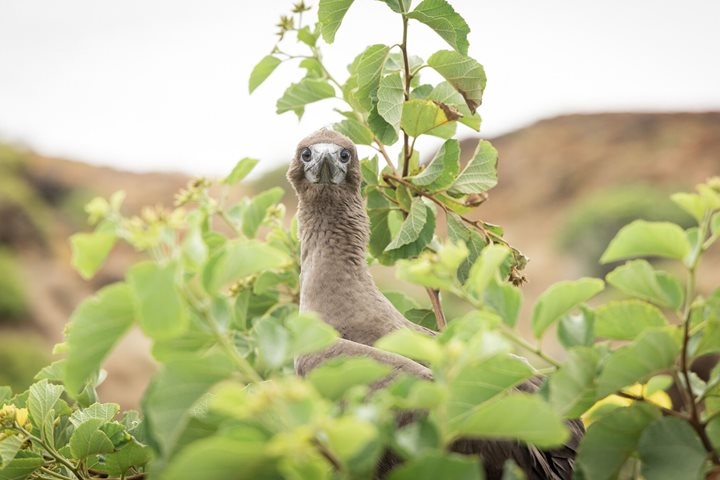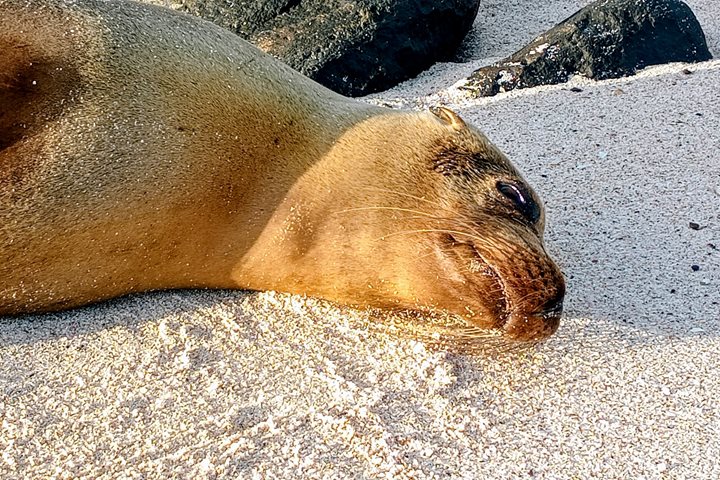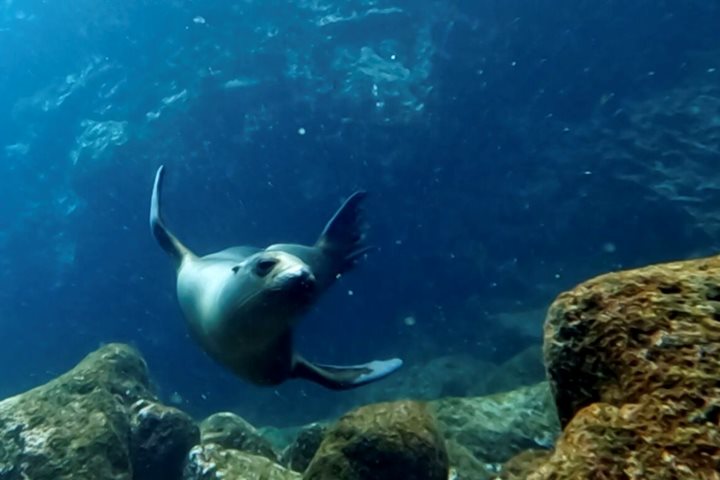Our day began with a mesmerizing exploration of Roca Redonda and Punta Vicente Roca. The morning sun cast a golden glow on the towering cliffs that define this part of Isabela Island. We navigated along the coast, observing the diverse marine life that thrives in these nutrient-rich waters. Notable encounters included playful Galapagos sea lions, elegant flightless cormorants, and sea turtles. Snorkeling enthusiasts were treated to a world beneath the waves and non snorkelers saw just as much from our glass-bottom Zodiac. In the afternoon, our expedition led us to the pristine shores of Fernandina Island. This uninhabited island is a haven for wildlife. The highlights were undoubtedly the iconic Galapagos marine iguanas basking on black lava rocks. As we carefully navigated the island's trails, we marveled at the otherworldly landscapes shaped by ongoing volcanic activity. A sighting of a Galapagos hawk soaring overhead added a touch of wild majesty to our exploration. The sense of isolation and raw nature in these untouched Galapagos corners reminded us of the importance of preserving these ecosystems. Our journey continues tomorrow, promising new wonders in this extraordinary archipelago.
- Daily Expedition Reports
- 06 Dec 2023
Isabela and Fernandina, 12/6/2023, National Geographic Islander II
- Aboard the National Geographic Islander II
- Galápagos
Anahí Concari, Naturalist/Certified Photo Instructor
Anahí grew up in a small house by the beach in the Galápagos Islands. Along with her best friend, she used to wander during the days around mangrove trees, becoming a different animal every day. She used to camp on solitary beaches, snorkel with shar...
Read MoreShare Report
Galápagos Escape: An 8-Day Voyage
VIEW ITINERARYRelated Reports
6/23/2025
Read
National Geographic Islander II
Española Island
Today we visited Española Island, the southernmost—and one of the most spectacular—of all the Galápagos Islands. Known for its unique wildlife and dramatic landscapes, Española offered us a day full of unforgettable encounters. In the morning, we landed at Gardner Bay, where a long stretch of white coral sand welcomed us. Galápagos sea lions lounged along the shore, completely unfazed by our presence. Offshore, we snorkeled in the clear waters among colorful reef fish and Pacific green sea turtles. Playful sea lions swirled around us like underwater acrobats. In the afternoon, we explored Punta Suárez, one of the best wildlife viewing sites in the entire archipelago. The trail led us through colonies of Nazca boobies and blue-footed boobies, some engaged in nesting or courtship dances. We also witnessed waved albatrosses, many sitting on eggs or gliding in the wind above the cliffs. The highlight for many was watching a pair of albatrosses perform their elaborate, synchronized courtship ritual, full of beak clacking and head swaying. As we approached the cliff’s edge, we were treated to the dramatic sight of waves crashing against the rocks and the famous blowhole, which sent bursts of water high into the air. With seabirds soaring overhead and marine iguanas sunbathing in every direction, the magic of Española was on full display.
6/22/2025
Read
National Geographic Islander II
Floreana Island
Today the guests of National Geographic Islander II had a chance to snorkel at Champion Islet, just off Floreana Island. It was a breathtaking expedition to one of the most vibrant marine ecosystems in the Galapagos. As soon as we slipped into the water, we were greeted by schools of colorful fish and playful Galapagos sea lions.

